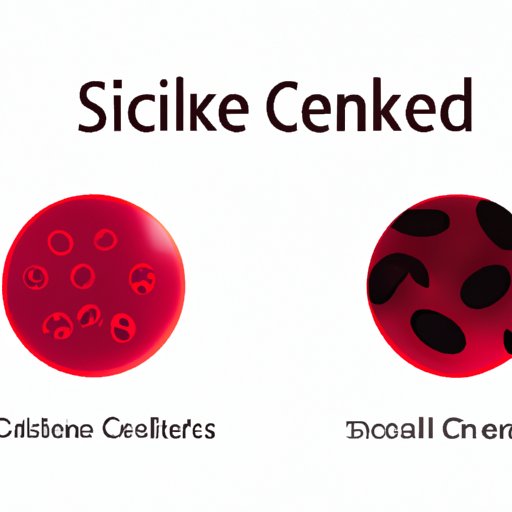
I. Introduction
Sickle cell disease is a genetic disorder that affects millions of people worldwide. It is important to understand its causes in order to provide effective treatment and improve the quality of life of those affected by this disease.
II. Genetic Mutation that Causes Sickle Cell Disease
Sickle cell disease is caused by a genetic mutation that affects the shape and function of red blood cells. This mutation results in the production of abnormal hemoglobin, which causes the red blood cells to become rigid and assume a crescent shape, rather than the normal disc shape. This abnormal shape causes the cells to get stuck in small blood vessels, leading to decreased blood flow and oxygen delivery to tissues.
The responsible gene is found on chromosome 11 and affects the production of the beta-globin subunit of hemoglobin. There are different types of sickle cell disease, depending on the specific mutation involved.
Sickle cell disease is inherited in an autosomal recessive manner, which means that a person must inherit two copies of the mutated gene, one from each parent, in order to develop the disease.
III. Symptoms of Sickle Cell Disease
Sickle cell disease can cause a wide range of symptoms, which can vary in severity and frequency among individuals. The most common symptoms include pain, anemia, and an increased risk of infections.
The disease can also affect various organs, such as the brain, lungs, and spleen. Pain crises, or episodes of severe pain, are a hallmark of sickle cell disease and can occur in different parts of the body. Anemia, or a decreased amount of red blood cells, can cause fatigue, weakness, and shortness of breath. The spleen, which helps fight infections, can become damaged and increase the risk of infections. The brain and lungs are also at risk for damage due to decreased blood flow and oxygen delivery.
IV. Epidemiology of Sickle Cell Disease
Sickle cell disease is most common in certain populations, such as those of African descent. It is estimated that about 300,000 babies are born with sickle cell disease each year, and the majority live in sub-Saharan Africa.
The disease is also found in populations from the Middle East, Mediterranean, and India. It is less common in populations of European or Asian descent.
Socioeconomic factors can also affect the prevalence and severity of sickle cell disease. Poor access to healthcare, inadequate nutrition, and exposure to infections can all increase the risk of complications in individuals with sickle cell disease.
V. Treatments for Sickle Cell Disease
There is no cure for sickle cell disease, but there are treatment options that can help manage the symptoms and reduce the risk of complications. Treatment plans are tailored to each patient based on the severity and frequency of their symptoms.
Medications such as hydroxyurea can help increase the production of fetal hemoglobin, which can reduce the amount of abnormal sickle hemoglobin in the blood. Blood transfusions can also help increase the amount of healthy red blood cells in the circulation, improving oxygen delivery to tissues. In severe cases, bone marrow transplants may be an option.
Each treatment option has risks and benefits, and the decision to pursue treatment depends on various factors, such as the patient’s age, overall health, and goals of treatment.
VI. Ongoing Research into Sickle Cell Disease
There is ongoing research into new treatments for sickle cell disease, as well as efforts to better understand the underlying mechanisms of the disease. Gene therapies show promise for curing the disease by replacing the mutated gene with a normal copy.
Research is also being done to develop new drugs that can target specific pathways involved in the disease process. Clinical trials are underway to test these new treatments.
As we continue to learn more about sickle cell disease, we can better understand how to prevent and treat the disease, and ultimately improve the quality of life for those affected by it.
VII. Conclusion
Sickle cell disease is a serious genetic disorder that affects millions of people worldwide. It is caused by a genetic mutation that affects the shape and function of red blood cells. The symptoms of sickle cell disease can vary in severity and frequency, and can affect different organs in the body.
Although there is no cure for sickle cell disease, there are treatment options that can help manage the symptoms and reduce the risk of complications. Ongoing research into new treatments and a better understanding of the disease are crucial in improving the outcomes for those affected by this disease.




